Lake De Smet, Wyoming
Posted by graywacke on February 9, 2015
First timer? In this formerly once-a-day blog (and now more-or-less a once or twice a week blog), I have my computer select a random latitude and longitude that puts me somewhere in the continental United States (the lower 48). I call this “landing.” I keep track of the watersheds I land in, as well as the town I land near. I do some internet research to hopefully find something of interest about my landing location. To find out more about A Landing A Day (like who “Dan” is and what the various numbers and abbreviations mean in the first paragraph), please see “About Landing,” (and “Abbreviations” and “Cryptic Numbers”) above.
Landing number 2154; A Landing A Day blog post number 582.
Dan: Today’s landing marks the 42nd straight western / midwestern landing (and an OSer to boot). . . WY; 75/69; 3/10; 20; 150.2.
Ouch. It happened. My Score went back above 150 . . .
Here’s my regional landing map:
My local map shows my proximity to Lake De Smet (as well as to the town of Buffalo):
And my trip in from outer space:
Here’s my more local watershed analysis:
I landed in the watershed of Clear Ck and on to the Powder R (12th hit). Zooming back, the Powder R makes its way to the Yellowstone R (54th hit); to the Missouri (391st hit); to the MM (845th hit):
Route 16 (on my local landing map) runs a little more than a mile and half west of my landing. It has GE Street View coverage:
Here’s the shot from the perspective of the orange dude:
Obviously, I decided to feature Lake De Smet rather than the town of Buffalo. Of course, I checked out Buffalo, but couldn’t really find a compelling hook. So on to the Lake. Here’s a GE shot of my landing and the lake (also showing Street View coverage):
The orange dude was busy taking pictures. Here’s his shot of the lake:
So, I Googled Lake De Smet and the only, I repeat, the only Wiki entry that deals with the lake is entitled: “Lake Desmet Segment, Bozeman Trail.” Although this sounded a little obscure (and because I didn’t see the expected “Lake De Smet” Wiki entry), I clicked on it. It did, in fact, have a couple of paragraphs about the Lake:
Lake Desmet occupies a natural internally-drained basin. It is one of several basins in the Buffalo area that were formed by coal seam fires. After the coal deposits burned, the clinker and other sediments collapsed into the space vacated by the burned coal forming a natural basin.
The original natural lake was about 1500 acres in size, but various dams (along with some drainage diversions) have increased the size of the lake to about 3600 acres today.
Wow. Very cool – a burned-out coal seam caused a lake! My curiosity was piqued, so of course, I looked a little harder for the straight-ahead Wiki entry on the lake. And I found that THERE IS NO WIKIPEDIA ENTRY FOR LAKE DE SMET! AYKM?
So Wiki failed me, but this sounds like a great story! I renewed my Google search. I went to WondersOfWyoming.com and found this:
This deep-blue body of water up in Johnson County is a jewel. And it’s a jewel that possesses not just beauty, but plenty of legend as well. Named after the first white man to lay eyes on it back in 1840, Lake De Smet is a huge, deep watery Wonder of Wyoming. Oh yes, the lake took its name from a Jesuit priest, Father Pierre Jean De Smet, who when travelling with fur trappers came upon Lake De Smet.
So, this coal seam fire wasn’t anything recent – it must have been a natural event. I need more information!
I went deep into Google searching for “Lake De Smet geology” (with many fruitless detours checking out various entries that might have some good information, but didn’t). I made it all the way to page 8 of my Google search. I next-to-never go 8 pages deep on a Google search! But there, I found a blog, “Gravel Beach” with a post about Lake De Smet. The author of the blog evidently has a thing about gravel beaches, and he stumbled on a gravel beach at the south end of Lake De Smet. He took this picture:
And he had this to say:
The hills surrounding the lake are Tertiary (Eocene) sedimentary rocks, marked by resistant outcroppings of clinker. Clinker is a red or black rock that results when coal seams burn and bake the overlying sediments (see Callan Bentley’s Mountain Beltway Blog at AGU).
Click here for his full post.
This beach was at the south end of the lake, next to the dam, and consists entirely of gravel-sized clinker. Finally, some verification about the burning coal seam! So, of course, I went to the Mountain Beltway Blog. I’ve copied nearly the entirety of Callan Bentley’s post:
Have you ever seen anything like this?
You’re looking at an outcrop of very interesting rock. The bright red stuff is officially called “clinker,” though many of the Wyoming locals where it outcrops incorrectly call it “scoria.”
What is clinker? It’s sedimentary rock that’s been baked by a burning coal seam beneath. The idea is that in places where sedimentary strata including coal outcrop on the surface, the coal seams can be set alight by prairie wildfires or lightning strikes, and then they burn back into the stratum, away from the surface outcrop (though at slower rates where there is less oxygen immediately available).
The heat released by the combustion contact metamorphoses the sediments adjacent to the burning coal. [“Contact Metamorphosis” is the process whereby a rock is physically & chemically changed because of exposure to extreme heat. For example, shale will be changed to “clinker.”]
In some places, the heat may be so intense as to actually go beyond contact metamorphism, and melt the overlying sediments. When this happens, it produces a slag-like material called “paralava.” This paralava may mobilize through small vent systems that cut across the stratification of the host rock.
Here’s a more removed photo of the same outcrop, seen near Buffalo, Wyoming, on the western edge of the Powder River Basin. The strata in question are all Eocene in age, part of the Wasatch Formation:
A closer look at the paralava vent (dark, sub-vertical feature) follows, with Sheridan College’s geologist Tom Johannesmeyer for scale. I think you can get a sense of the crazy wind we were experiencing as this photo was taken – strong enough that small pebbles were being picked up by the wind and slammed into us:
Click here to see his blog post – his pictures allow you to zoom in to get a closer look at the outcrops.
So now I’m really on to something! Feverishly continuing my Google search, I found an obscure USGS publication that had a single picture of the Lake, with a caption stating that the lake formed when a 100 to 200 foot-thick coal seam (part of the Wasatch formation mentioned above) burned. Nothing about when it happened or any other details.
From the Wyoming Geological Survey, in an article about Wyoming Coal Geology, I found this picture of a thick coal seam exposed in a strip mine (probably in Gillette):
This gives you an idea of how a thick coal seam can be exposed at the surface. The article mentioned the Lake De Smet area (which is why it showed up on my Google search), saying that coal seams there are as thick as 200’.
So, let me say again. I am shocked (and appalled) that something as interesting as the origin of Lake De Smet is so ill-addressed on the internet. Could it be that there is no significant geological literature about the subject?? I mean really!
When did the coal seam catch fire? How long did it burn? When did the lake actually form? Does anybody have a cross-section of the lake showing where the coal seam used to be?
While I’m sure the lake’s not 300 years old (the evidence would be more raw). I guess it could be 1,000 years old (although I’d say it’s unlikely for the same reason); maybe 10,000 years old (why not?); 100,000 years old (maybe not that old, because it would be buried by sedimentation by now). Hey – what do I know? Not much.
I really like this lake. It is practically undeveloped, and the Big Horn Mountains loom just to the west. There is, however, a real estate development, “The Shores at Lake De Smet.” Here’s a picture of one of the lots for sale, looking towards the Big Horn Mountains:
Here’s another one (this one’s lake front!):
I’ll take it! (Click here to find a lot that you’d like.)
As per my wont, I’ll close with some GE Panoramio shots. All of the closest ones are of Lake De Smet, so I’ll start and stay there. Here’s one by Michel P from the road heading down to the lake off I-90:
Here’s a good shot of red clinker sand and gravel, by ConnieMod:
Here’s a peculiar clinker bedrock shot by Scorched Earth Photo. Are we looking down at the blue lake or up at the blue sky?
I’ll close with this lovely lake shot (by b’wile’d) of a sail boat against a cloudy sky. That would be my sail boat with me at the helm after I buy the lake front lot, build a house and a dock and settle in . . .
That’ll do it.
KS
Greg
© 2014 A Landing A Day
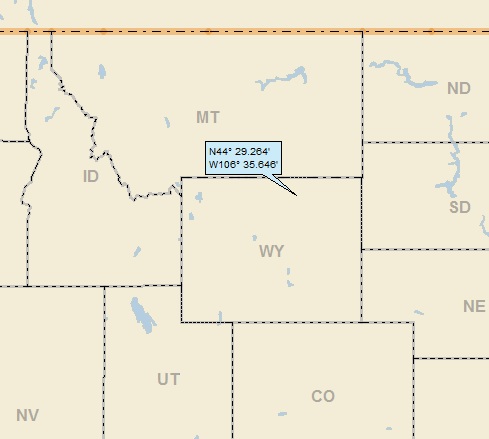
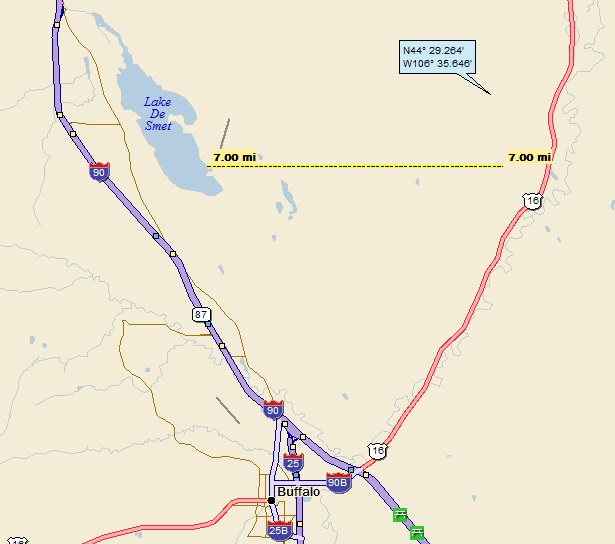
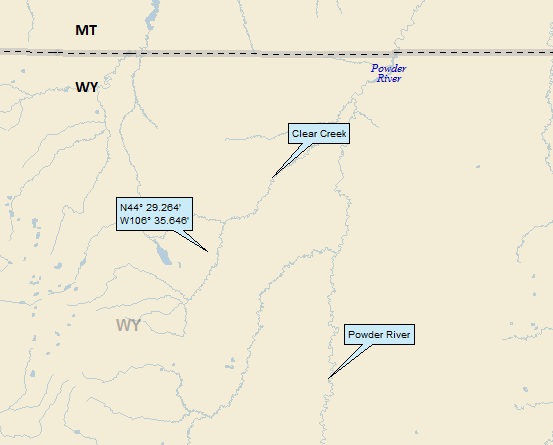

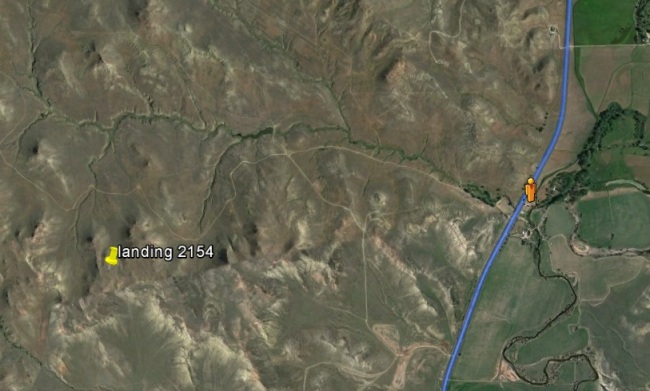
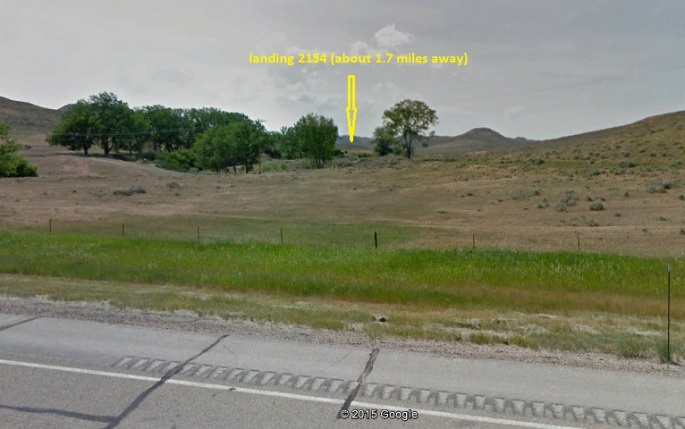
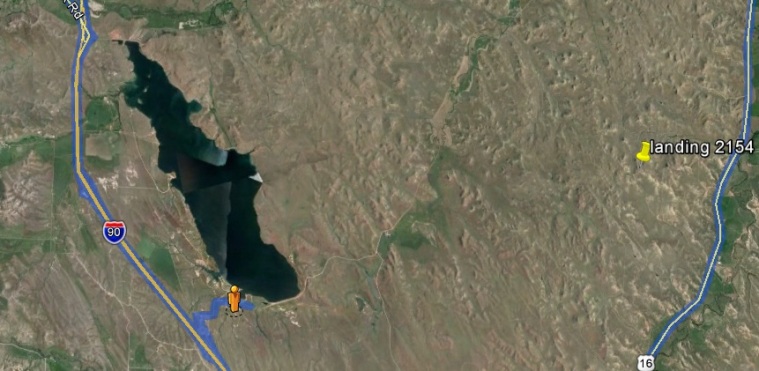
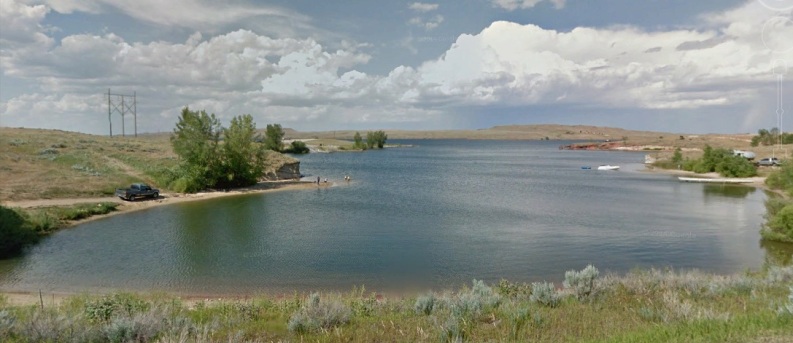

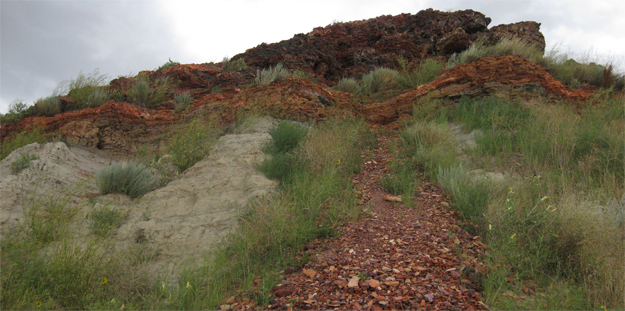


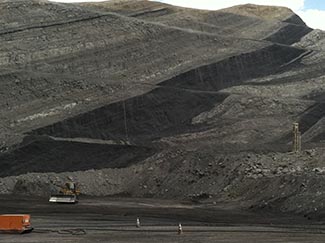

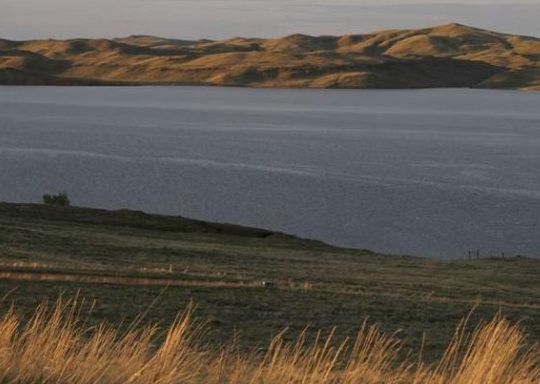

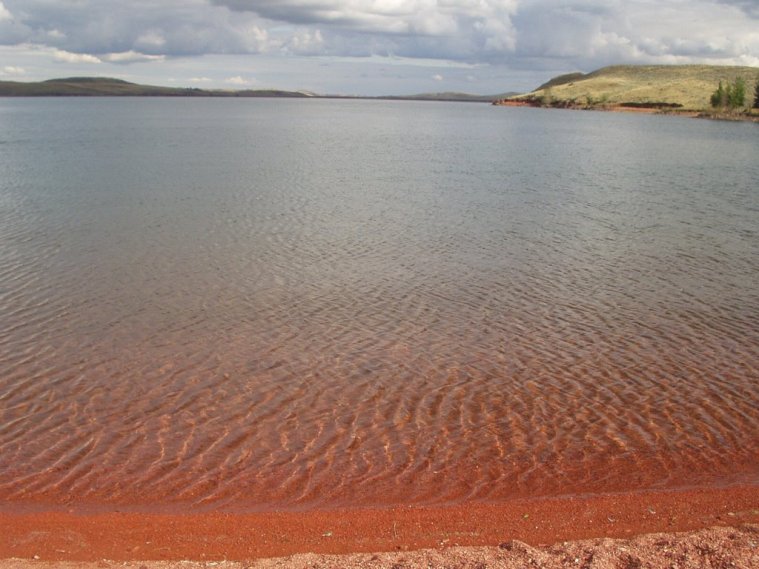

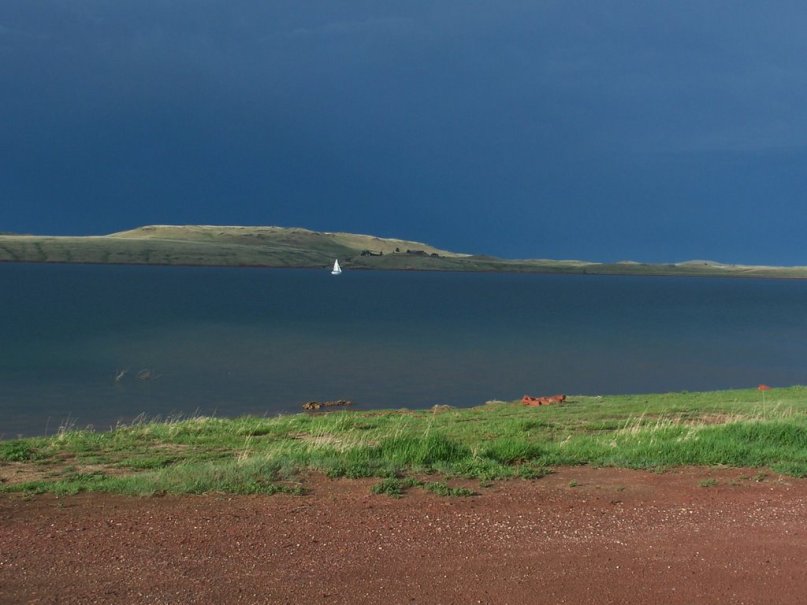
Cheryl said
Nice one, Greg. Coal seam fires? Clinker sand? Who knew?
I’ll have to drop these names sometime soon in casual conversation.
Cheryl
Jordan said
Great detective work fath! And wow…thought I’d never see 150 again. I think you’re due for a score graph soon. Maybe also a map of your last 42 landings to illustrate how absurd the western bias is.
Julie Yates said
So interesting- just drove by it on the way to Little Big Horn. Thanks so much for answering many of the questions we had when we say it.
graywacke said
Julie – Glad you appreciated this post. I just reread it myself, and it is a great post! What an interesting story . . .
Greg
jester292 said
Very very interesting. Father DanceswithWolves DeSmet must have been quite the fascinating traveler and had great stories to tell. The concept of your blog really appeals to me, especially that you “dig deep.” Until I buy a lot near yours, I’ll be following you here now. Thanks much.